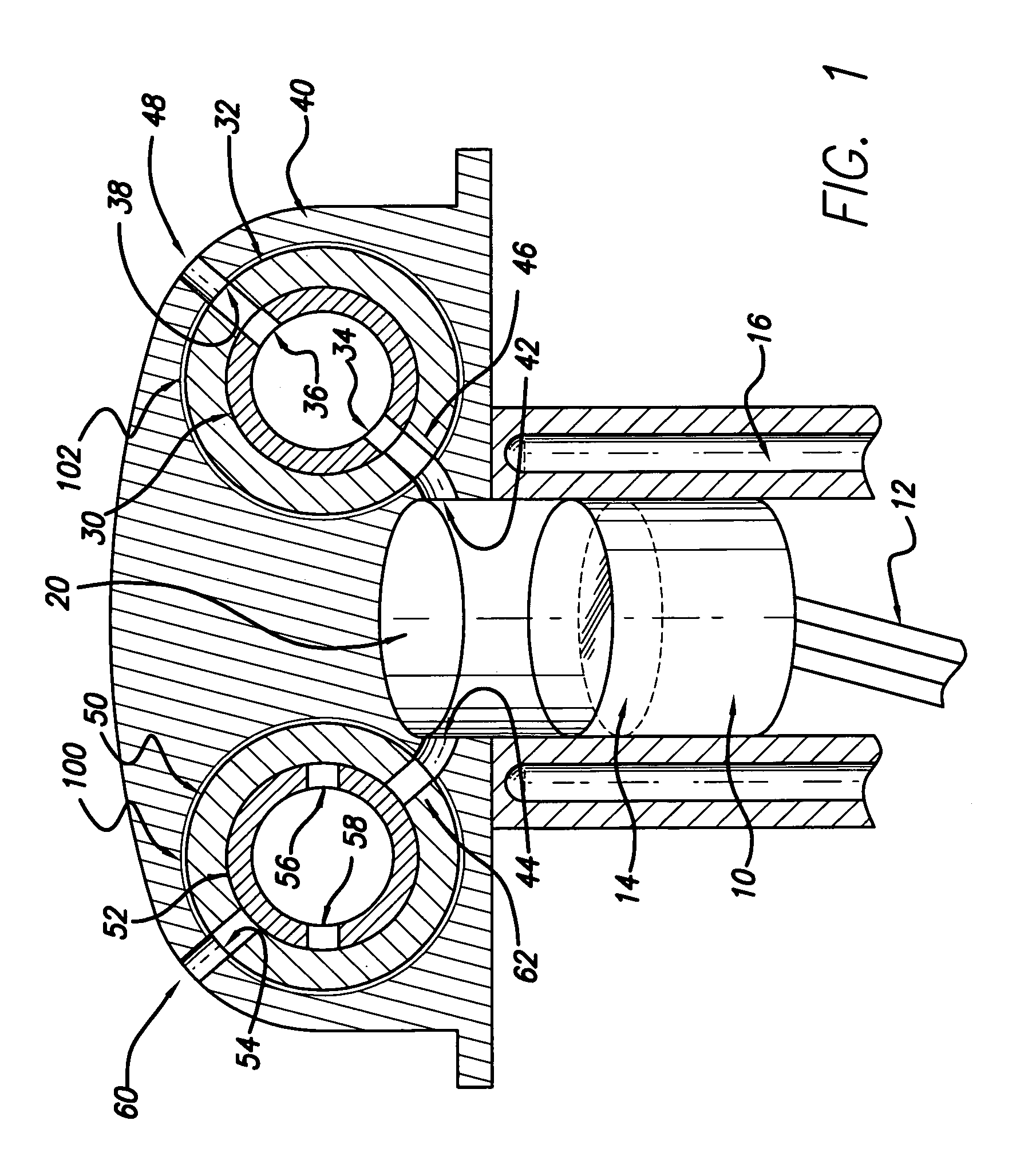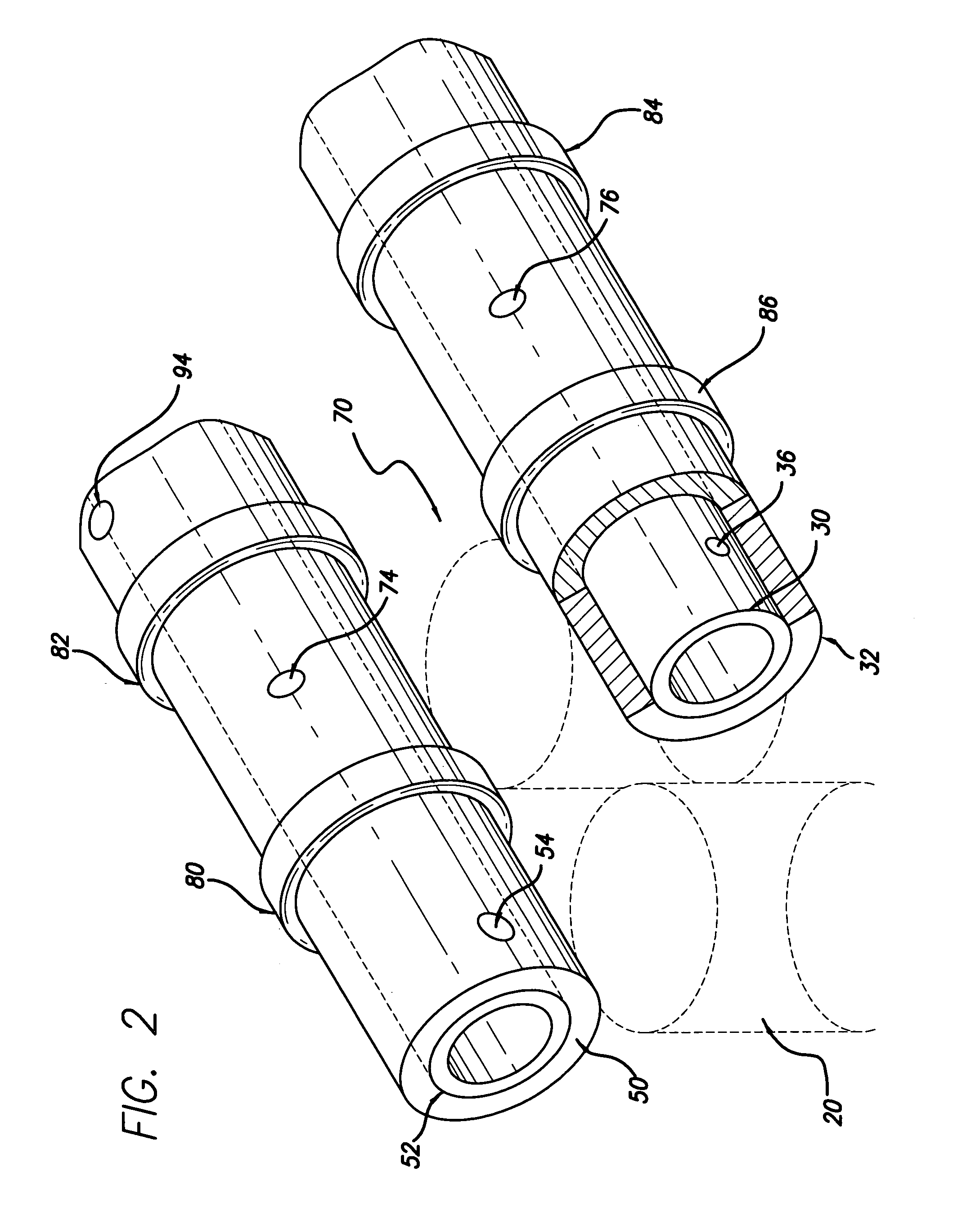Slotted cylindrical tube rotary valve assembly
- Summary
- Abstract
- Description
- Claims
- Application Information
AI Technical Summary
Benefits of technology
Problems solved by technology
Method used
Image
Examples
Embodiment Construction
[0029]FIG. 1 depicts a cross-sectional view of an embodiment of the present invention. In one embodiment, rotary assembly valve (head unit cradle) 40 comprises of two sets of rotary valves. FIG. 1 illustrates an example configuration where the right side of the piston is the intake side and the left side is the exhaust side. It will be apparent to those skilled in the arts that in other embodiments the configuration can be reversed. In this example configuration, on the right hand side, inner slotted cylindrical tube 30 is located co-axially with outer slotted cylindrical tube 32. In one embodiment, inner slotted cylindrical tube 30 comprises of slots or apertures 34 and 36. Inner slotted cylindrical tube 30 rotates co-axially, relative to outer slotted cylindrical tube 32. In another embodiment, outer slotted cylindrical tube 32 and inner slotted cylindrical tube 30 both rotate, but in opposite direction. At a certain time during the rotation, apertures 34 and 36 of inner slotted c...
PUM
 Login to View More
Login to View More Abstract
Description
Claims
Application Information
 Login to View More
Login to View More - R&D
- Intellectual Property
- Life Sciences
- Materials
- Tech Scout
- Unparalleled Data Quality
- Higher Quality Content
- 60% Fewer Hallucinations
Browse by: Latest US Patents, China's latest patents, Technical Efficacy Thesaurus, Application Domain, Technology Topic, Popular Technical Reports.
© 2025 PatSnap. All rights reserved.Legal|Privacy policy|Modern Slavery Act Transparency Statement|Sitemap|About US| Contact US: help@patsnap.com



